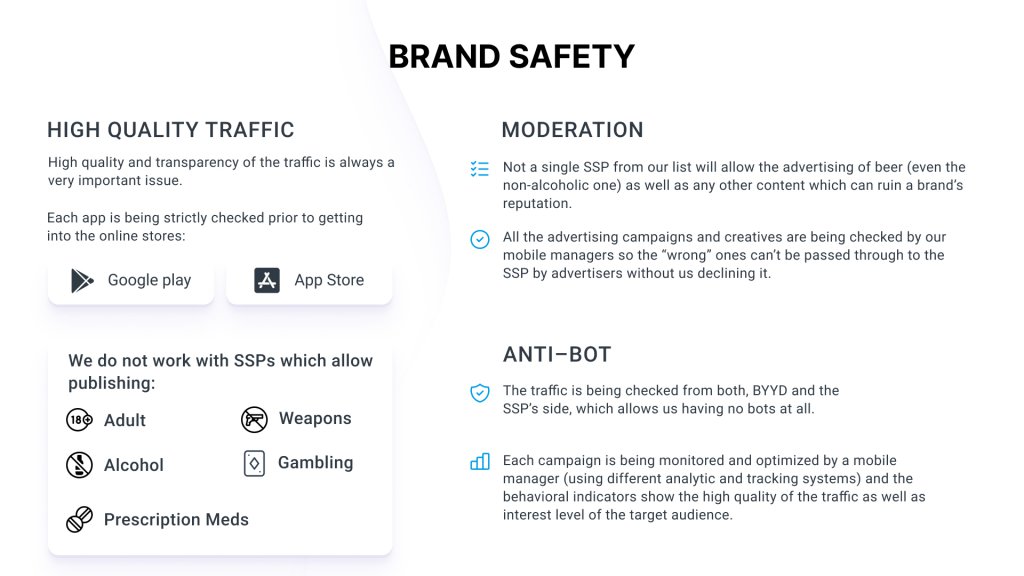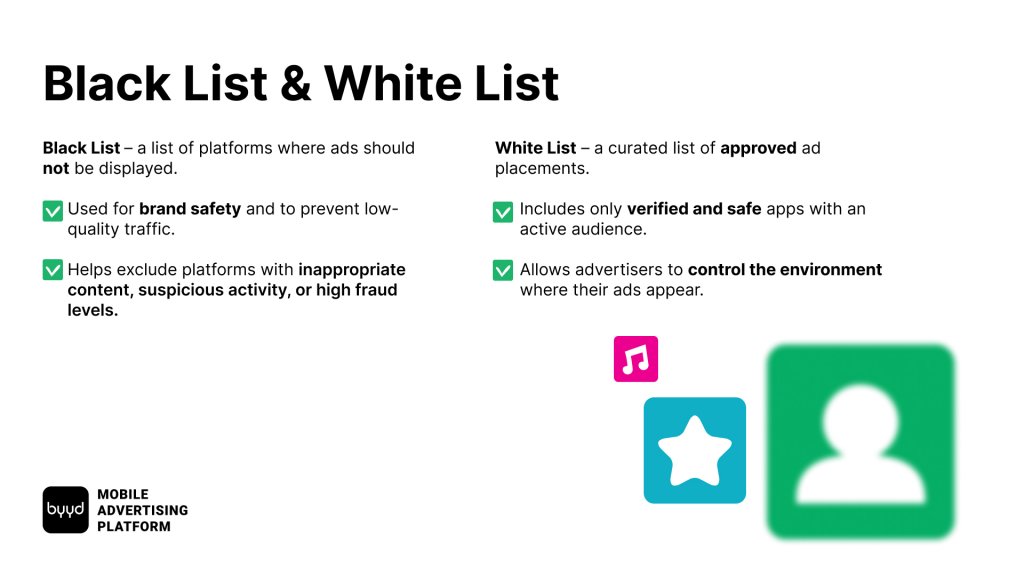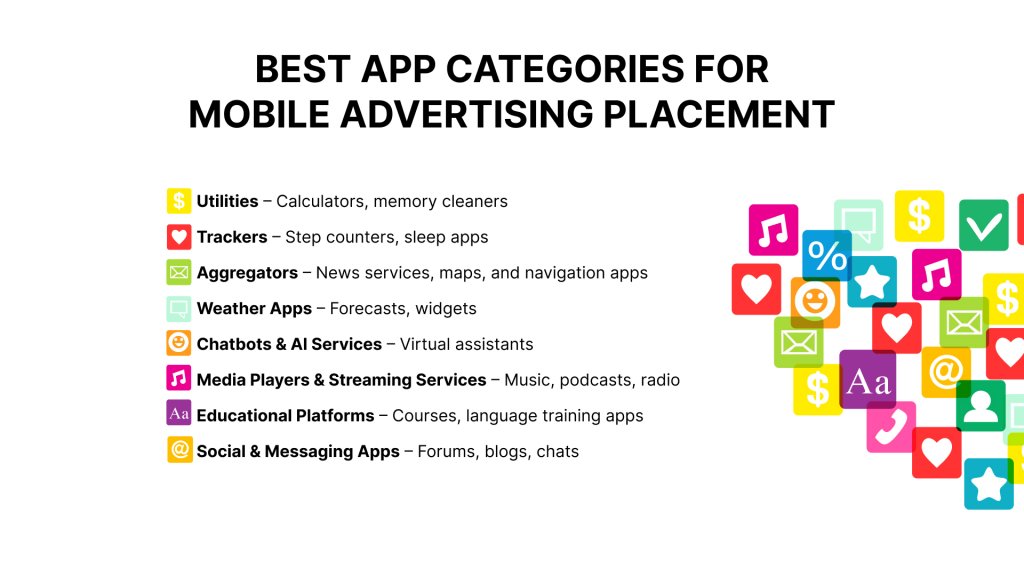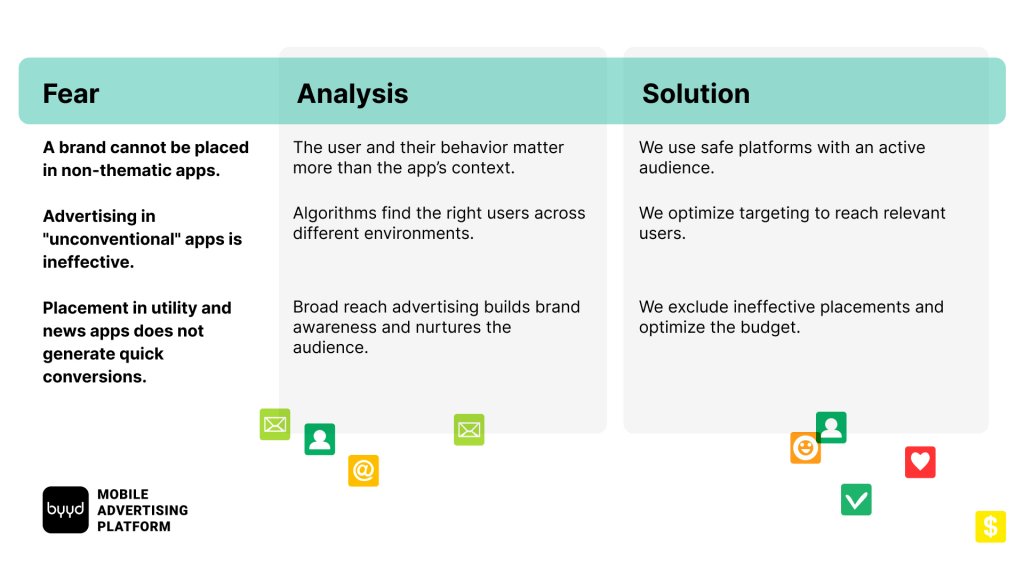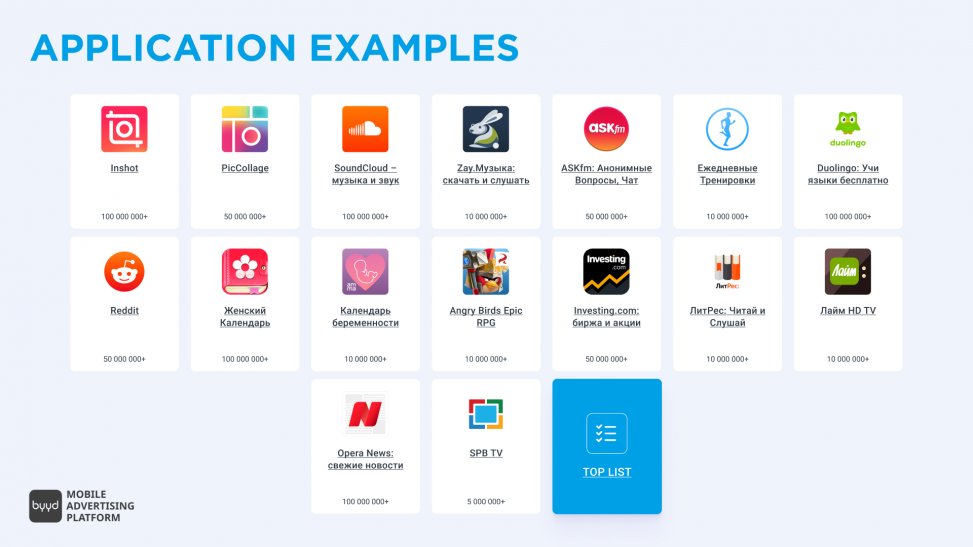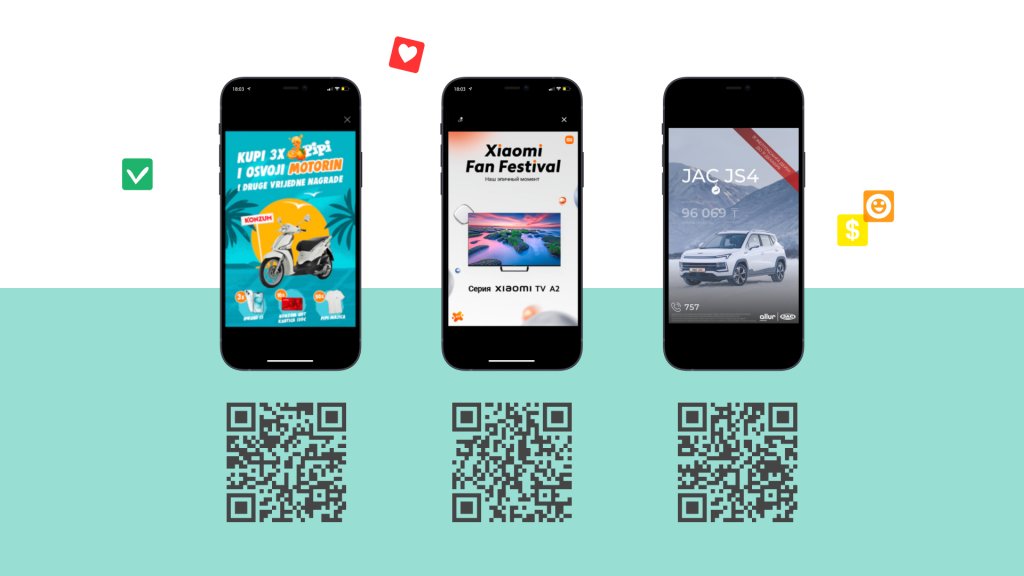How Limiting the List of Apps for Placement Affects In-App Advertising Performance
Narrowing the list of apps for ad placement is a common mistake. Many advertisers aim to show their ads only in “relevant” app categories where they believe their target audience is concentrated.
However, in practice, excluding certain apps reduces reach and results in missed opportunities to engage potential customers.
Let’s break down why limiting app selection can negatively impact your in-app advertising performance and which app categories you should consider for effective mobile promotion.
Why Does Restricting App Selection Reduce Mobile Ad Reach?
- Users are active across various apps
A person interested in premium cosmetics doesn’t spend all their time in beauty-related apps. They also check the weather, read the news, use fitness trackers, listen to music, or play mobile games.
If ads are shown only within a narrow app category, they fail to reach the target user during other moments of their digital activity.
As a result, the number of brand touchpoints decreases, reducing the likelihood of conversion.
- Fewer placements = higher ad costs
The fewer available placements (ad inventory), the higher the competition among advertisers. This naturally drives up the cost of impressions.
By excluding certain apps, advertisers limit their potential reach. This leads to higher CPM and CPA, making campaigns more expensive and less efficient.
- Missed audience engagement opportunities
Ads perform better when users see them multiple times in different contexts. Repeated exposure improves brand recognition and increases the likelihood of conversion.
If a brand restricts placements to a narrow category of apps, it misses out on the chance to reinforce its message in other places where the target audience is active.
This ultimately lowers campaign effectiveness and shrinks the sales funnel.
When Does App Restriction Benefit Brands?
Of course, there are cases where limiting app placements is necessary. On our platform, advertisers can manage this through two key tools: Black List and White List.
- Black List – A list of apps where ads should not appear, usually for brand safety reasons.
Example: A brand may choose not to advertise in news apps to avoid associations with negative or sensitive content.
- White List – a list of platforms that are specifically suitable for ad placement. This tool allows advertisers to focus on relevant categories.
Example: A children’s brand wants to place ads in kids’ games and parenting apps.
However, it’s important not to restrict ad placements too narrowly.
Even if a campaign is focused on a specific theme, it’s worth including verified and safe apps from broader categories:
- Utilities (calculators, memory cleaners)
- Trackers (step counters, sleep apps)
- Aggregators (news services, maps, and navigation apps)
- Weather Apps (forecasts, widgets)
- Chatbots & AI Services (virtual assistants)
- Media Players & Streaming Services (music, podcasts, radio)
- Educational Platforms (courses, language learning apps)
- Social & Messaging Apps (forums, blogs, chats)
These apps can provide strong reach and audience engagement, even if they don’t seem like an obvious fit at first glance.
Advertisers’ Key Concerns
Let’s break down the main fears advertisers have and assess how valid they really are.
- “A premium brand shouldn’t be advertised in utility apps”
In reality, all brands successfully run ads even in weather apps and chatbots. What matters most is not the app’s context but the user and their behavior.
If an app is safe and has an active audience, it becomes a valuable touchpoint – even if it doesn’t seem like an obvious “target” placement.
- “This isn’t our audience”
If the ad system is already targeting the right users, it doesn’t matter which app they are using when they see the ad.
Algorithms identify and reach users based on specific targeting criteria, ensuring that the right audience sees the campaign.
- “These apps have low conversion rates”
Broad-reach advertising is designed to build brand awareness and increase touchpoints. The first interactions may not lead to immediate conversions, but they contribute to long-term recognition, increasing the likelihood of future conversions.
To prevent ineffective placements, BYYD continuously optimizes campaigns. Apps with low audience engagement are excluded, ensuring that the budget is spent efficiently.
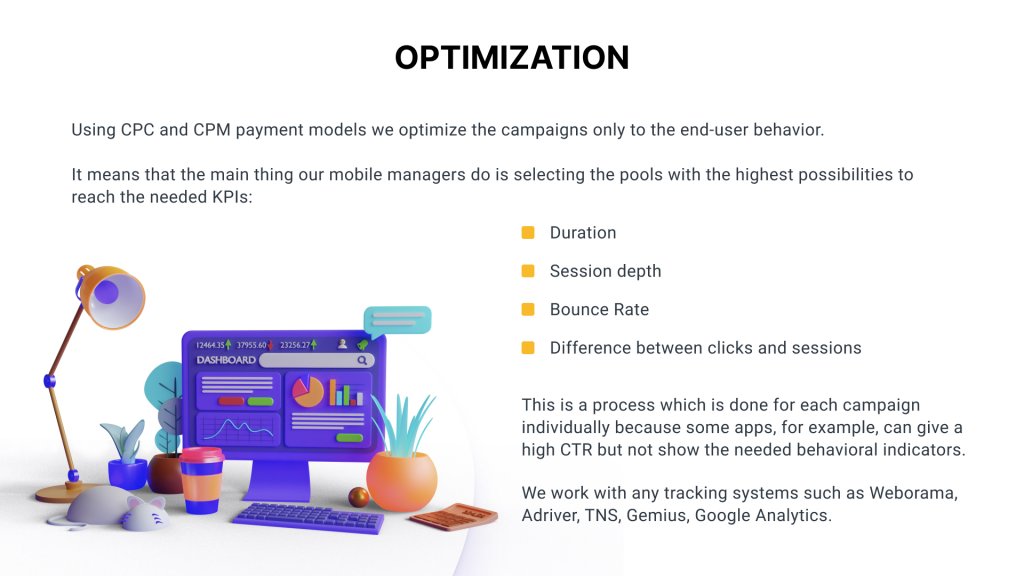
This approach helps strike the optimal balance between broad reach and traffic quality.
BYYD Recommendations
- Expand placements and analyze results
Instead of strictly limiting ad placements, it’s essential to test different apps and evaluate performance.
This approach helps discover new touchpoints with the audience and reduce acquisition costs.
- Analyze audience behavior across different app categories
It’s important to consider not just the type of apps but also how users engage with them.
The same user might actively interact with various categories—from social media to utility apps—making it crucial to understand their behavior beyond a single app type.
- Focus on ad performance, not just app selection
The best approach is to optimize campaigns based on data, prioritizing conversions and acquisition costs over app-specific placements.
At BYYD, we combine automated analysis with expert optimization. App effectiveness is evaluated using platform data, ensuring the right balance between reach and traffic quality.
For 10 years, our platform has been helping brands run effective in-app advertising campaigns and achieve outstanding results.
Check out our case studies to see real success stories.
If you’re ready to launch a campaign or have any questions, feel free to reach out to us via email – we’ll find the best solution for your goals!
Found this helpful? Share it with your friends and colleagues!
For consultations and partnership inquiries:
- Submit a request on our website
- Email us at hello@byyd.me
